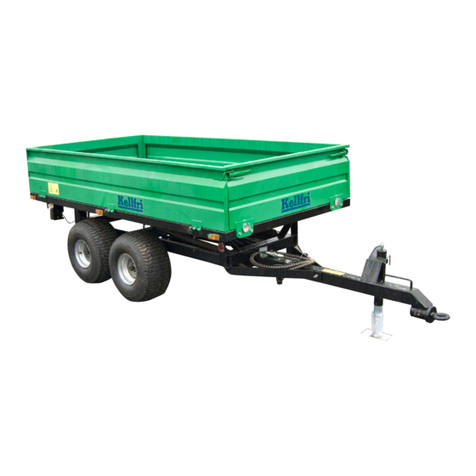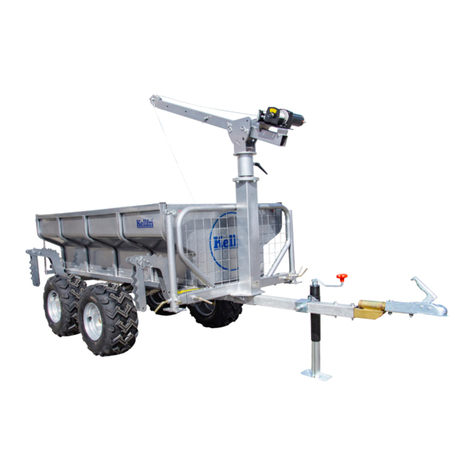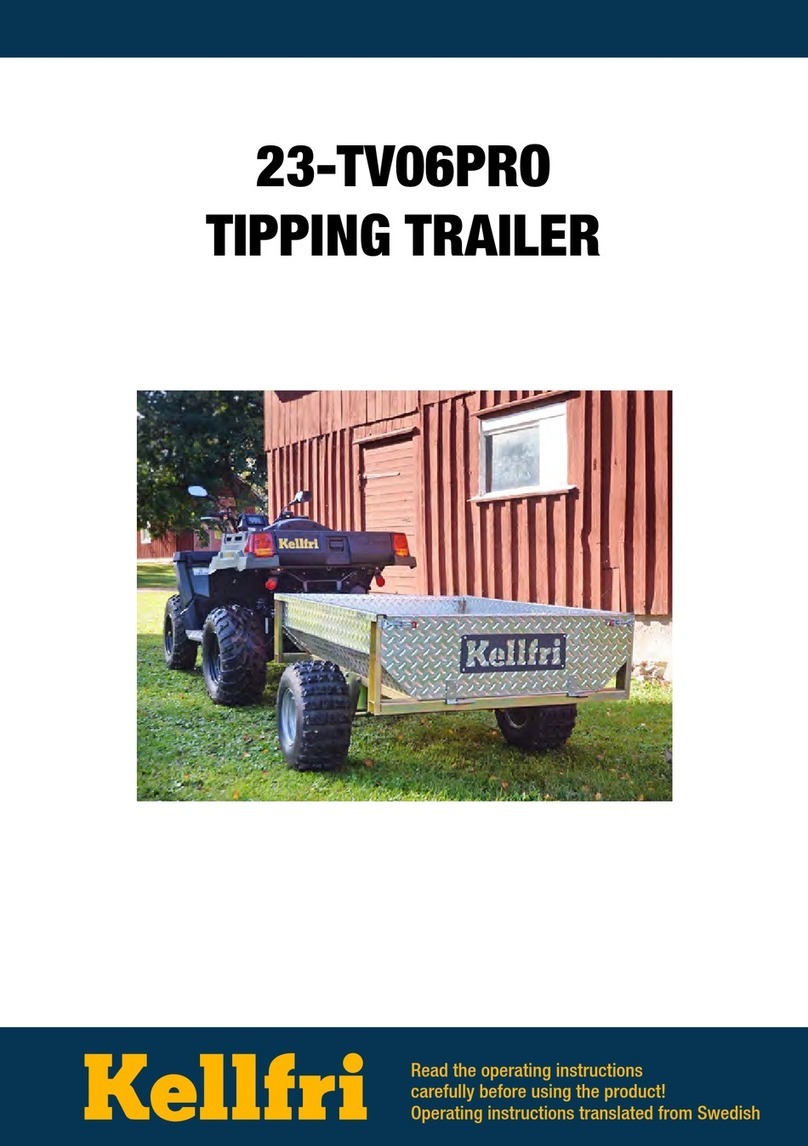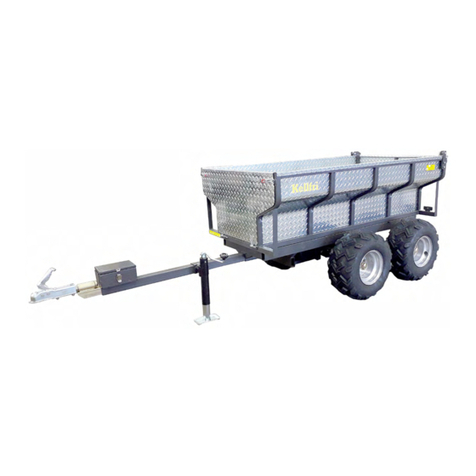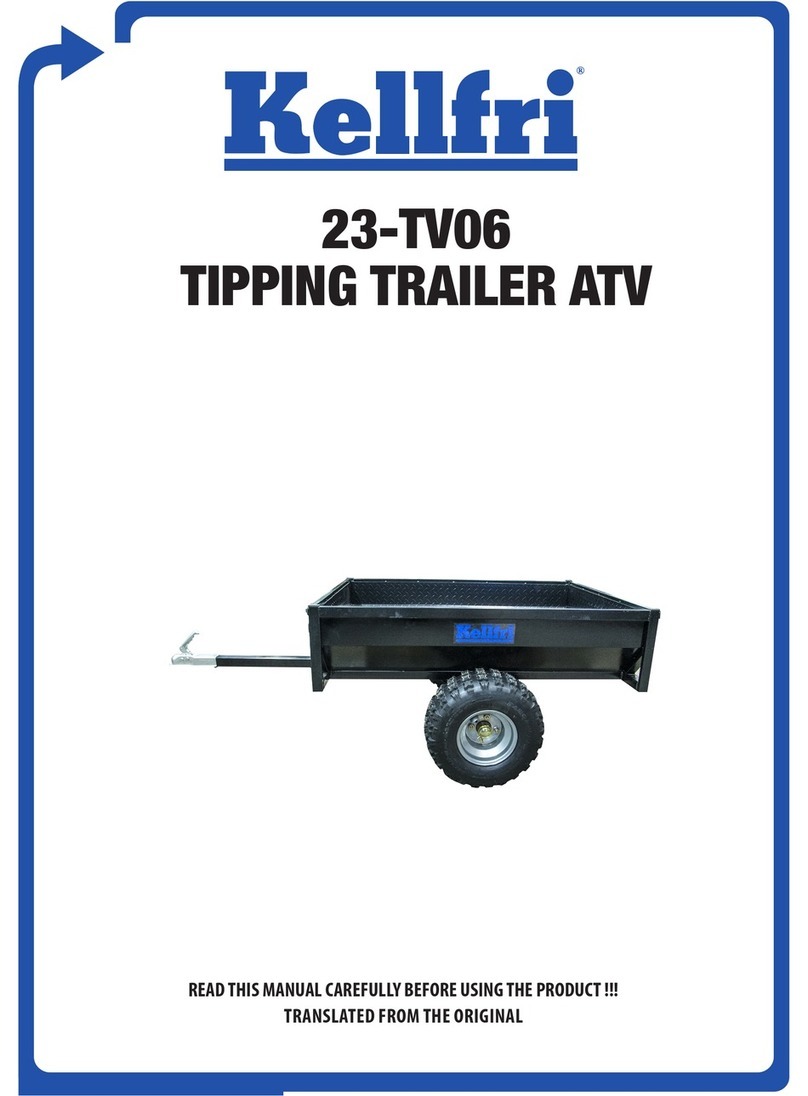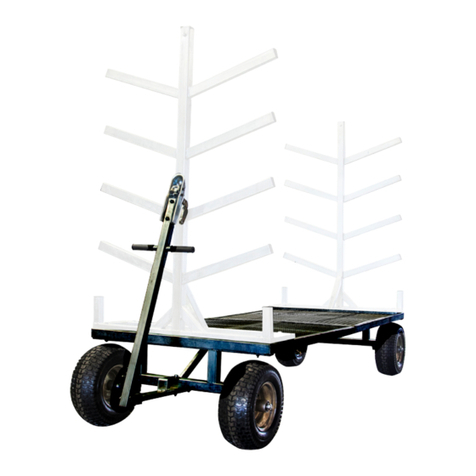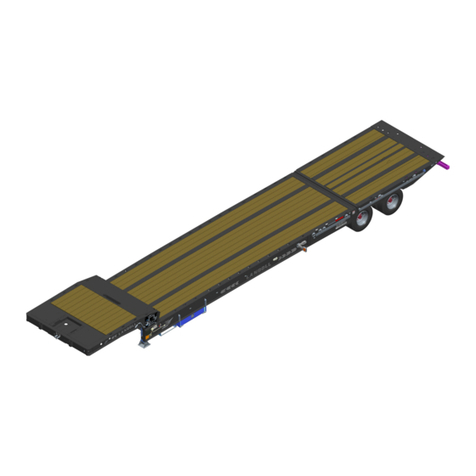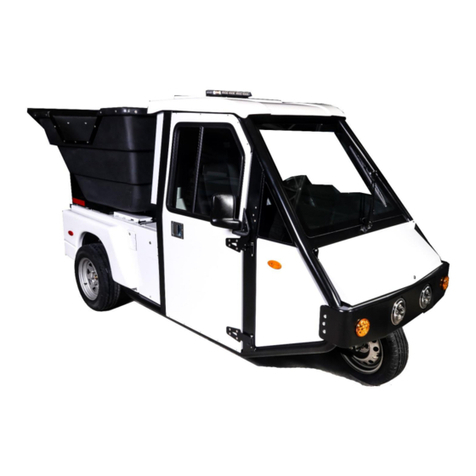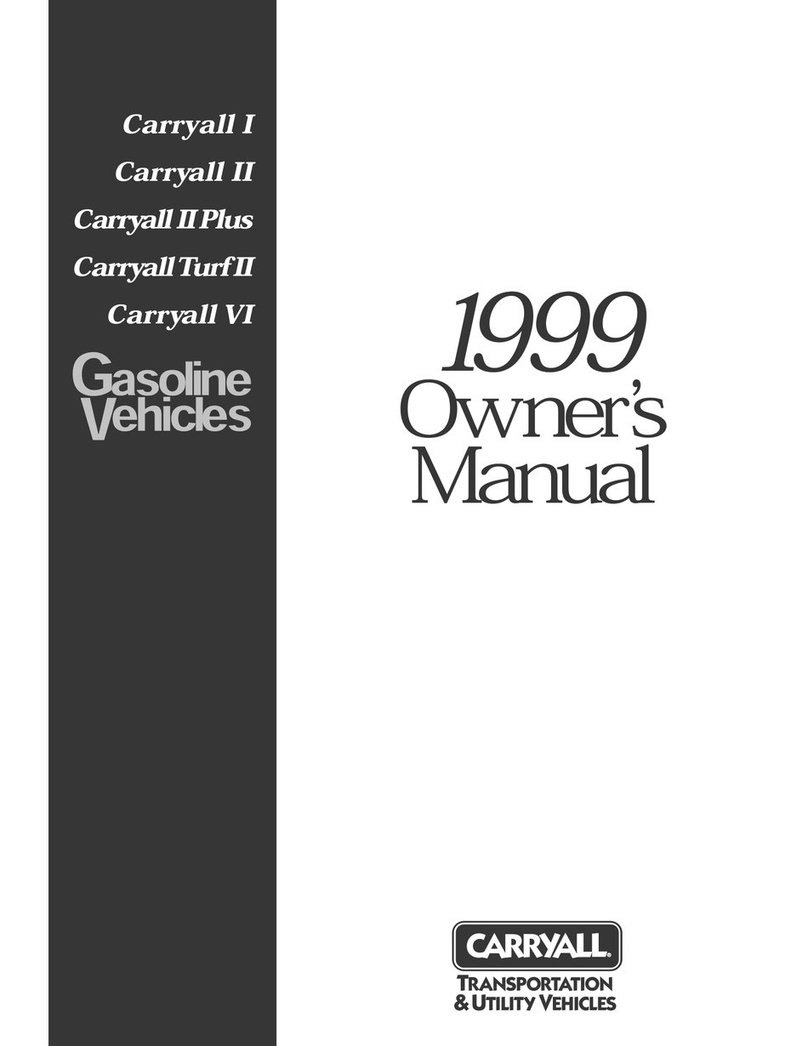AFTER USE
Rinse the trailer when needed.
TRANSPORT AND STORING
Make sure there are no people, children and foreign objects around the area before transport-
ing the machine. Always take an extra caution during the transport. Ensure that the product
is well secured and that transport brackets are mounted. Always place the load as low as pos-
sible. Respect the danger zone even during transport. When lifting the equipment, never go
underneath suspended loads. Trailer used for transport should have working brakes. Always
store the machine in a dry place preferably underneath a cover when not in use. Ensure that
the product is stable and not likely to tip over. Never let children play where the machine is
being stored. Always keep in mind the risk of tipping!
MAINTENANCE AND SERVICE
Ensure that the unit is stable and cannot tip over during maintenance and service. Replace damaged or
worn parts immediately to reduce the risk of abrasion. Always perform maintenance, service and inspec-
tion, as recommended. Use only original replacement parts or spare parts with equivalent performance to
reduce the risk of damage. All repairs and connections with electricity must be performed by a qualied
person. Check all nuts and bolts are tightened after performning maintenance and service.
Always test the machine before using it.
• Regularly check the condition of the equipment to prevent breakdowns. If cracks, twists, bends,
gaps or fatigue is discovered, stop using the equipment and rectify the fault. Worn parts must be
replaced. Grease moving parts regularly.
• Never repair hydraulics before rst ensuring that there is no pressure in the system.
• Never work under a suspended load.
• Make sure all connections are tightened after carrying our maintenance and service work. Always
test the machine before starting work.
• Check all parts for wear and retighten bolts, connections and hoses if necessary.
• Immediately replace hydraulic hoses if cracks or wear are detected.
• Check that the hoses are not rubbing against sharp edges, Rectify if necessary.
• Tighten leaking connections if there are any leaks. Do not overtighten the connections. They may
break if they are tightened too much.
• Turn o the tractor and move the hydraulic levers back and forth to release any pressure that may
still be in the oil hoses and pipes before starting any work on them or the hydraulic cylinders.
• It is recommended to use an oil lter with 20 µm ltration.
• Check the system oil ow and pressure on a regular basis.
• Never perform welding on the towbar eye as this may change its durability.
The hydraulic system must only be operated using the appropriate hydraulic oil. (Oil change
intervals: see the tractor’s operating manual). Use gearbox oil SAE 80 (2.5 L) or similar in the
slewing housing. All grease points must be lubricated every 25 hours. Retighten all nuts and
bolts after several of hours of operation and at the end of a day’s work.
Danger!
WARNING: Pressurised oil and fuel leaks can
penetrate skin and cause serious injuries. Do not
use your hands to locate leaks. Use a piece of
paper or cardboard to look for leaks.
